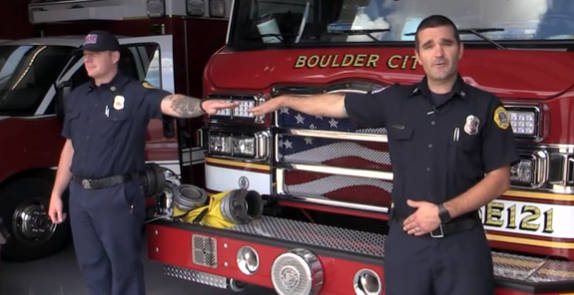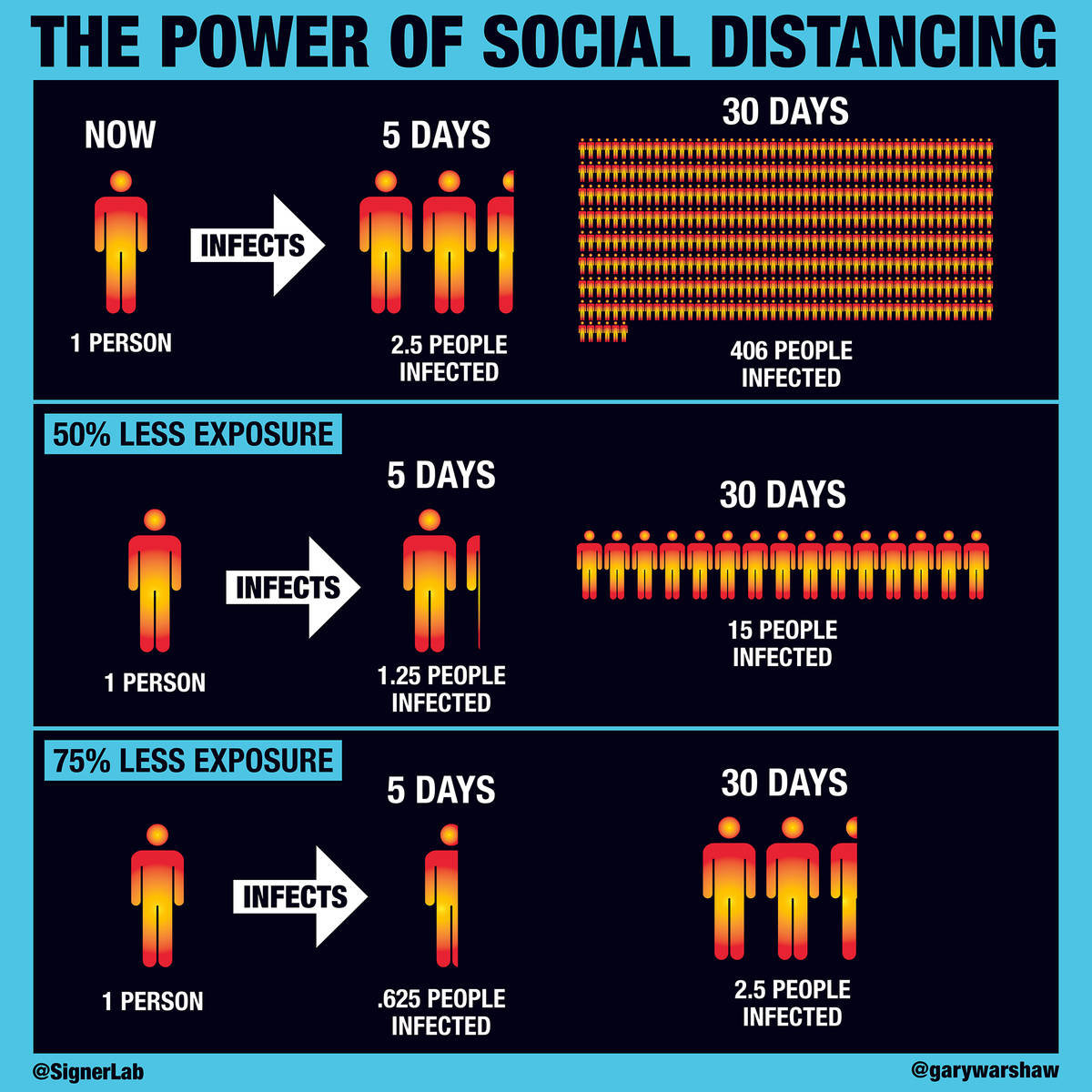Distancing makes ‘big difference’
Following social distancing protocols is the way to stop the spread of COVID-19 and the global pandemic, according to medical researchers and health officials.
“Executing it (social distancing) effectively can protect people from the spread of the virus. … When we social distance enough … in many cases, the pandemic stops,” said Robert A. J. Signer in an interview with the Boulder City Review. Signer is an assistant professor of medicine at the University of California, San Diego.
According to the Centers for Disease Control and Prevention, COVID-19 is spread mainly through person-to-person contact. Social distancing is increasing the space between individuals and decreasing contact to reduce the spread of the disease. The CDC recommends keeping 6 feet between individuals, even those who do not have any symptoms.
Recently, Signer and his art director, Gary Warshaw, created a graphic to demonstrate how social distancing can help stop the spread of COVID-19.
Signer said with the current data, he estimated the basic reproduction number of COVID-19 to be 2.5, meaning that each infected person will transmit the virus to an average of 2.5 other people.
“If each infected person transmits the virus to 2.5 other people over five days while they are asymptomatic, then a single infected person can become 406 infected people in just 30 days,” he said.
Signer said if people reduce physical contact by 50 percent, then only 15 people will become infected in 30 days. If physical contact is reduced by 75 percent, then only 2.5 people will become infected over 30 days.
“At this level of social distancing, new infections will approach zero. … This isn’t a small difference,” he added. “It’s a big difference.”
Boulder City firefighter and paramedic Jay Dardano said 6 feet between people equals about two arms lengths.
Dardano said that distance is important because droplets containing the coronavirus from people’s sneezes and coughs will start to drop toward the ground rather than landing on another person.
Symptoms of COVID-19, which are similar to the flu, are a fever, cough and shortness of breath. They can appear between two and 14 days after exposure. As of 9 a.m. Tuesday, there have been 1,113 confirmed COVID-19 cases in Nevada and 17 deaths.
More information can be found at http://www.cdc.gov/coronavirus/2019-ncov.
Contact reporter Celia Shortt Goodyear at cgoodyear@bouldercityreview.com or at 702-586-9401. Follow her on Twitter @csgoodyear.
















